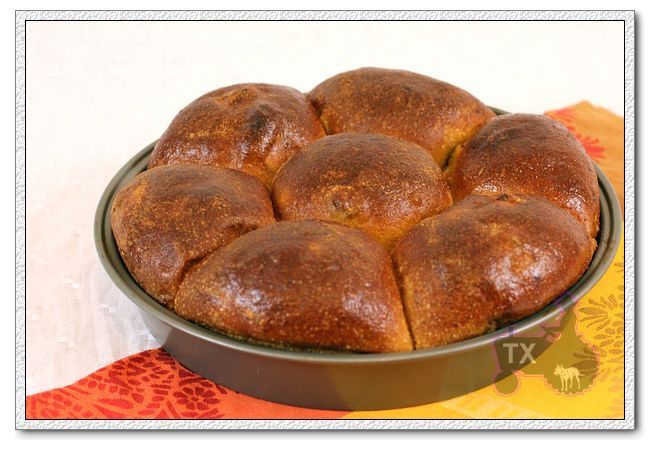
The formula is very loosely inspired by a bread in Beth Hensperger's "Bread for All Seasons", but I made so many changes, it no longer resemble the original.
The formula has both bread and ww flour, as well as some cornmeal. I planned to soak the cornmeal overnight but totally forgot, luckily, my fermentation schedule is very long (nearly 20 hours), and the dough was plenty wet, so cornmeal had enough time to soak in water, the buns were tender and soft anyway, no need for pre-soaking. Pumpkin adds lovely color and moisture, along with red cranberries and fragrant pecans, it's a bread screaming "Thanksgiving".
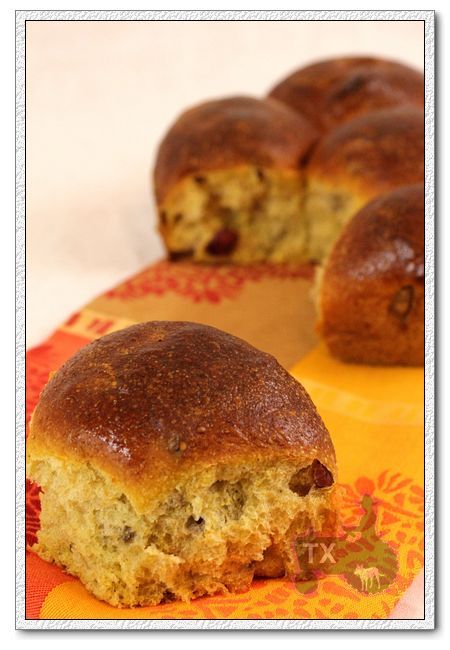
Thanksgiving pumpkin buns (my own)
Note: total flour is 263g, 15% is ww, the rest Bread Flour
Note: cornmeal is 18% of total flour (I don't count cornmeal toward total flour amount)
Note: 19% of total flour in levain
- levain
100% starter, 14g
flour, 43g
water, 23g
1. Mix and let mature at room temp for 12 hours.
- final dough
bread flour, 173g
ww flour, 39g
cornmeal, 47g
butter, 26g (softened)
honey, 39g
salt, 5g
pumpkin puree, 47g
milk, 89g
water, 59g
dried cranberries, 39g
toasted chopped pecans, 39g
levain, all
2. Mix everything but salt , butter, cranberries, and pecans, autolyse for 40 to 60min.
3. Add salt, knead until gluten starts to form, add butter, until pass windowpane test. See this post for how well the dough should be kneaded, with cormeal and ww flour, the windowpane is slightly weaker, but I still could pull a very large transparent windowpane dotted by grains. Add cranberries and pecans, knead by hand until evenly distributed.
4. Rise and room temp for 2 hours, fold once and refridgrate immediately overnight.
5. Take out dough and divide into 7 pieces, round and rest for one hour. Shape into rolls and put in a 9inch pie/cake pan.

6. Rise and room temp until more than doubled, (do finger test and it barely springs back), about 6hours for me at 75F.(Dallas was so warm recently)

7. Brush with egg wash, bake at 375F for 30 to 35min.
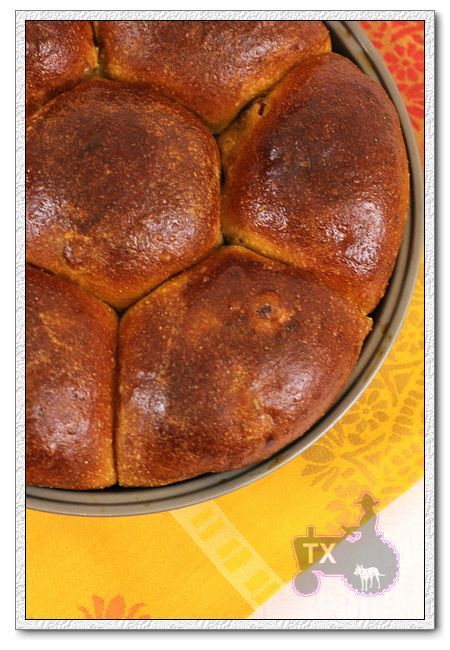
I kneaded more dough than the formula above indicates, so make a mini sandwich loaf with the extra dough, nice volume. This shows that even with whole grains added to the dough, you can still make soft and tall sandwich loaves.
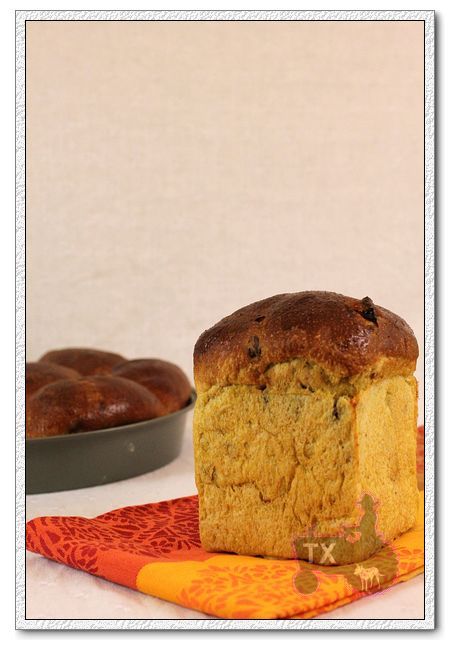
15%ww, 18%cornmeal, the texture is still "shreddably" soft.
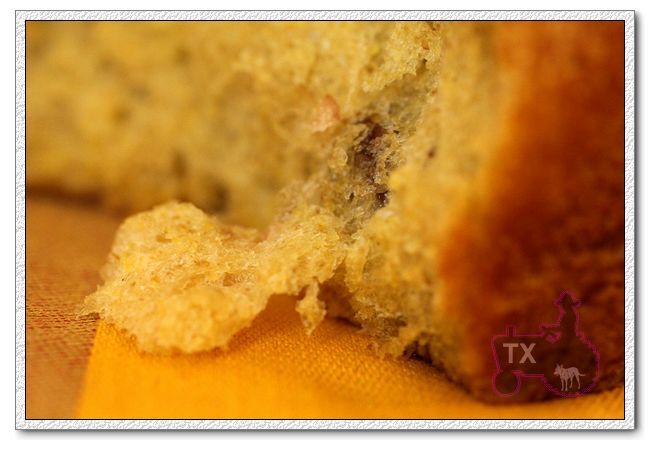
Pumpkin, cornmeal, honey, along with cranberries and pecans, this bread has most of the Thanksgiving staple foods in it.
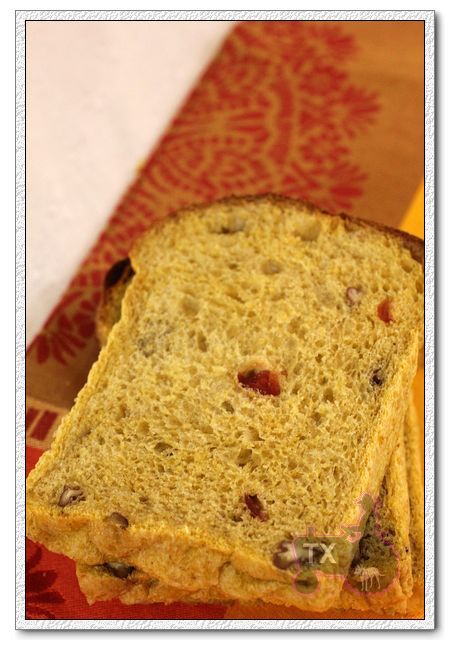
With some turkey meat, a Thanksgiving feast all in itself!
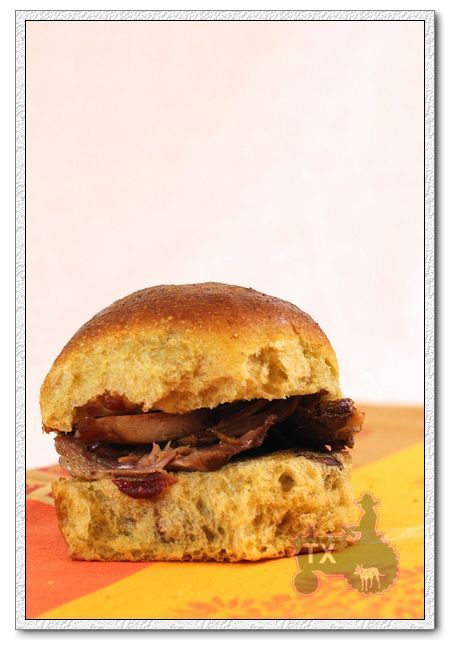
Sending this to Yeastspotting.